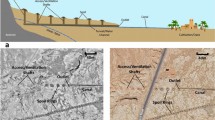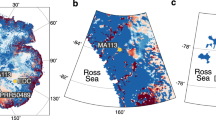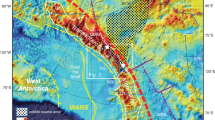Abstract
THE subject of glaciation in South Africa is so interesting and important that I venture to take an early opportunity of directing the attention of geologists to the farm of Brit Koppje, situated about three miles west of Vredefort Road Station, fifty miles north of Kroonstad, in the Orange River Colony. Here, on a koppje, the surface of the rock is so very conspicuously smoothed and rounded that its appearance can hardly, I think, be attributed to the action of any agent other than ice. The general resemblance to photographs of the glaciated rocks at Prieska in Cape Colony recently shown me by Mr. A. W. Rogers, of the Cape Colony Geological Commission, is very great (see a paper read before the South African Philosophical Society by Messrs. Rogers and Schwartz on November 29. 1899)
This is a preview of subscription content, access via your institution
Access options
Subscribe to this journal
Receive 51 print issues and online access
$199.00 per year
only $3.90 per issue
Buy this article
- Purchase on SpringerLink
- Instant access to full article PDF
Prices may be subject to local taxes which are calculated during checkout
Similar content being viewed by others
Author information
Authors and Affiliations
Rights and permissions
About this article
Cite this article
BARRETT-HAMILTON, G. Traces of Past Glacial Action in the Orange River Colony, South Africa . Nature 67, 223 (1903). https://doi.org/10.1038/067223a0
Issue date:
DOI: https://doi.org/10.1038/067223a0



